Rocky Mountain Instinct Powerplay
Wheel Size: 29’’ front / 29’’ rear
Travel: 140 mm rear / 150 mm Front
Geometry Highlights:
- Sizes offered: Small, Medium, Large, XL
- Headtube angle: 64.7° (Neutral geometry setting)
- Seat tube angle: 76.7° (Neutral geometry setting)
- Reach: 488 mm (Size Large, neutral geometry setting)
- Chainstay length: 439 / 449 mm (Adjustable)
Drive System Highlights:
- Motor: Dyname 4.0
- Torque: 108 Nm
- Power: 700 W
- Battery: 720 Wh with optional 314 Wh range extender (Overtime Pack 2.0)
- Display: Rocky Mountain Jumbotron
- Remote: Rocky Mountain Micro Remote
Frame Material: Aluminum and carbon fiber versions available
Price: Complete bikes $5,499 to $12,999
Blister’s Measured Weight (Instinct Powerplay C70 Shimano, size Large): 51 lbs / 23.1 kg
Test Location: Colorado
Reviewer: Simon Stewart (6’, 170 lbs / 183 cm, 77.1 kg)
Test Duration: 8 months
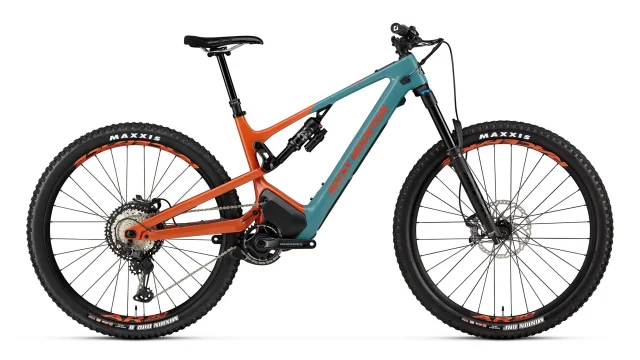
Intro
The Rocky Mountain Instinct PowerPlay pairs short-ish travel (140 mm rear / 150 mm front) with one of the most powerful drive systems available. Rocky Mountain designs and builds its own drive systems so they are in a position to engineer the Instinct Powerplay from the ground up as a cohesive package.
Shorter travel with one of the most powerful available motors is an interesting and fairly uncommon combination — one that brings up the recurring question of why not have all the travel if you have such a powerful motor. Rocky Mountain has a distinctly different perspective, with an emphasis on building a powerful, versatile, Trail eMTB rather than the usual longer-travel full-power Enduro type eMTBs.
Rocky Mountain also loves putting a Canadian spin on things with hockey references everywhere (which I love by the way), but besides all that cheekiness, they also have a refreshing approach to their bikes that makes them stand out. Let’s dive in and find out what makes the Instinct Powerplay such an interesting take on the full-power eMTB segment.
The Frame
Rocky Mountain Labels the Instinct Powerplay a mid-high pivot suspension design. The Smoothlink Suspension System features a horizontally mounted shock and their typical Horst-Link arrangement to achieve 140 mm of rear travel. Interestingly the front shock mount is modular, which according to Rocky Mountain will allow for future kinematic updates.
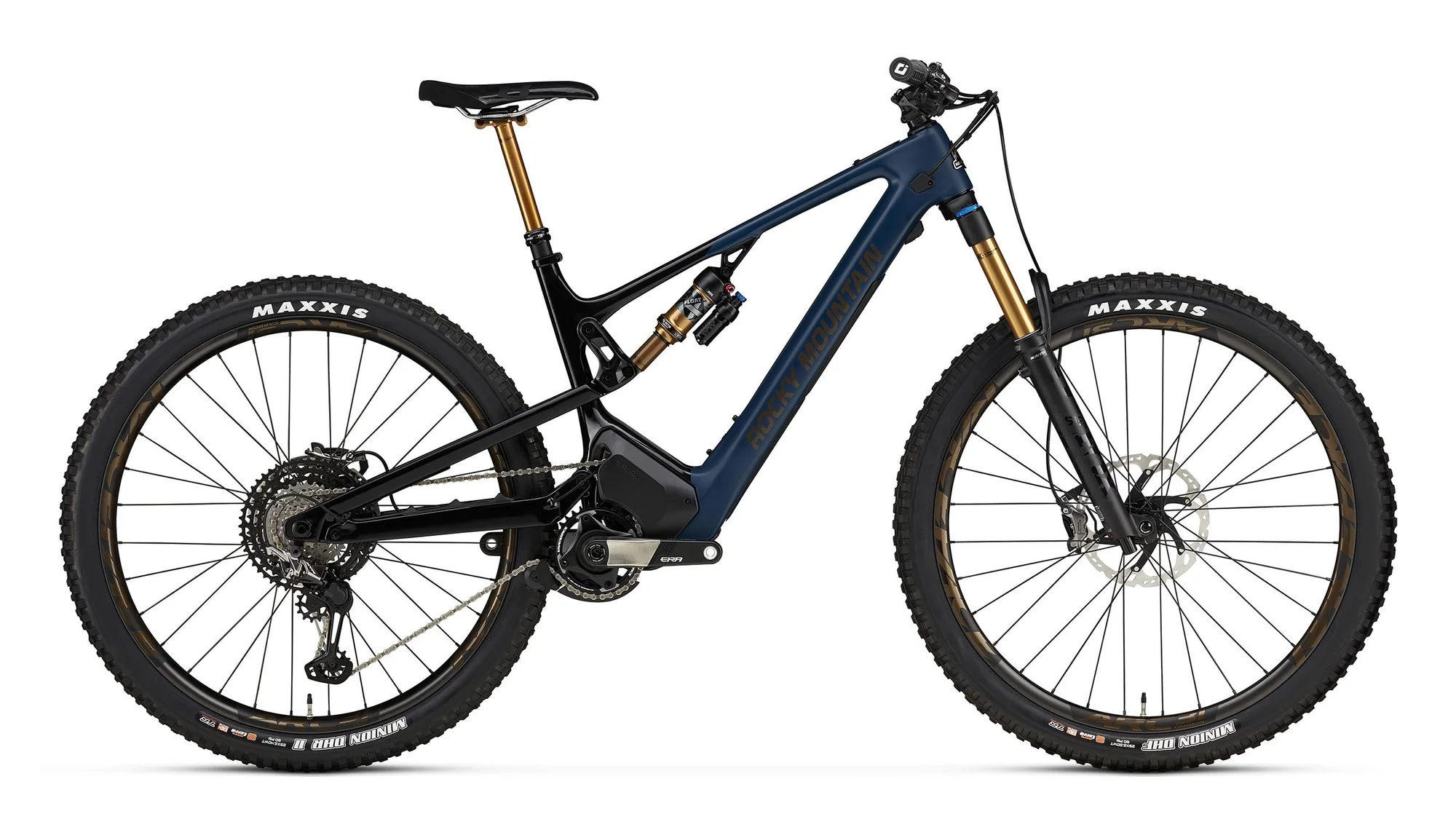
Rocky Mountain hasn’t provided any suspension graphs, but they state that the Smoothlink Suspension System has been optimized for the Powerplay models. They have increased the rearward axle path (presumably compared to the non-motorized versions) and have designed in a healthy amount of anti-squat.
On the carbon versions, both the front and rear triangles utilize Rocky Mountain’s proprietary “Smoothwall” carbon technology, while the Aluminum versions get their Form Alloy front and rear. All the frames have the Jumbotron integrated display, RIDE-4 adjustable geometry system, and a removable battery.
The RIDE-4 adjustment system not only provides geometry adjustability but also changes the suspension’s leverage curve a bit. It is the most progressive in position 1 (slack), and the least progressive in position 4 (steep). Positions 2 and 3 land in the middle.
Other frame details include water bottle mounts that can also be used to mount the Overtime Pack 2.0 range extender, a bash guard for the Dyname 4.0 motor, and ribbed chainstay protection.
Drive System
Rocky Mountain designs and makes its own drive system, an approach that makes them stand out, and gives them the freedom to come up with a drive system that not only meets their power goals, but also how that power is delivered.
By the numbers, the Dyname 4.0 motor is one of the most powerful motors currently available, with a claimed 108 Nm of torque and 700 watts of peak power. For reference, both Shimano (EP801) and Bosch (CX Line) are stated to deliver the same 85 Nm and 600 watts. You have to do some serious digging to find anything as powerful as the Rocky Mountain Dyname 4.0.
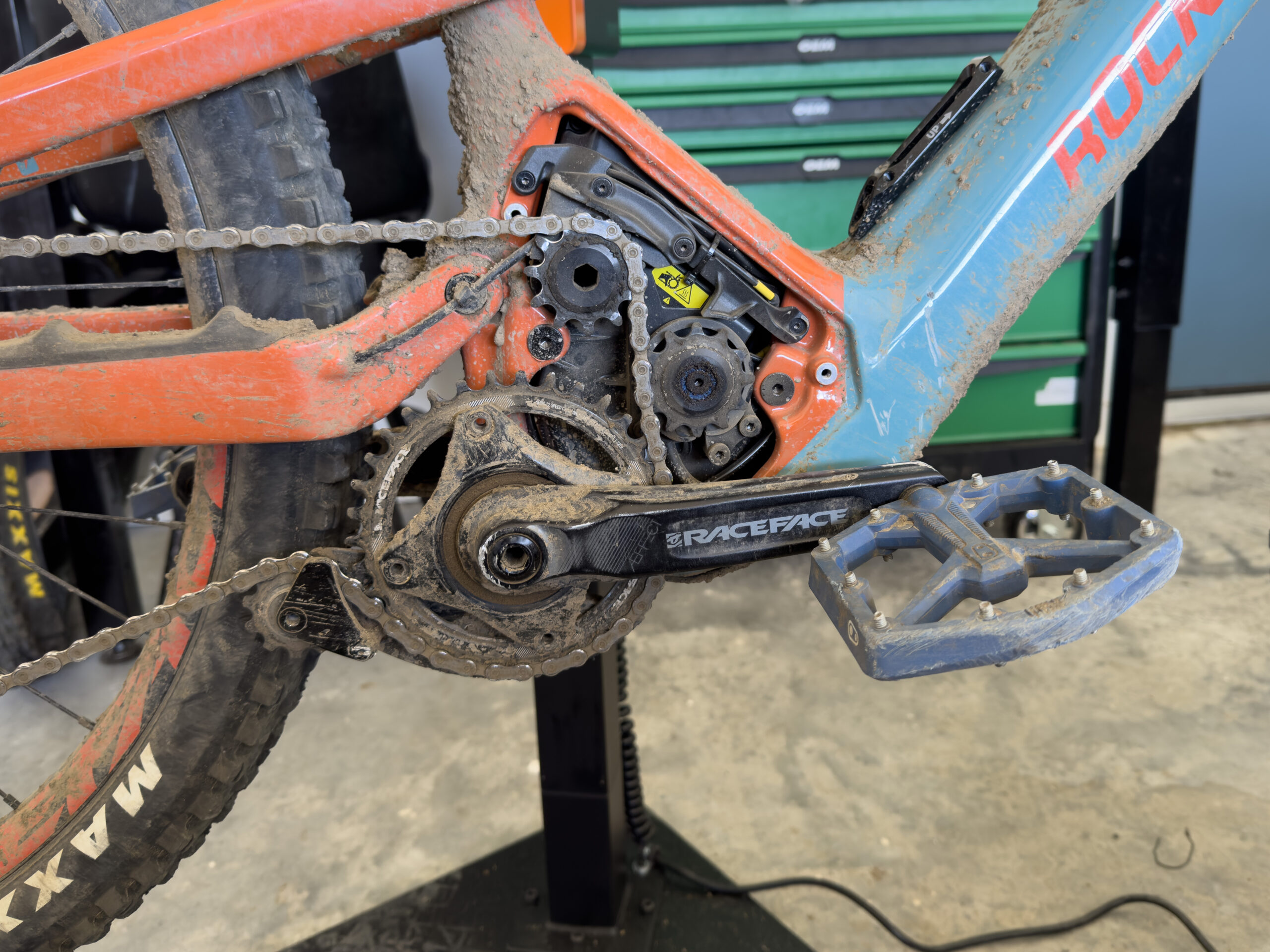
Another interesting aspect of the Dyname 4.0 drive system is how all that power is delivered. Rocky Mountain is adamant that they have gone to great lengths to produce a natural feel that compliments the rider’s input rather than overpowering it. The maximum assist percentage is listed as 350%; for reference, the Bosch Performance Line CX is 340% (the Bosch Race motor is 400%), while the Shimano EP801 is 400%. That is especially interesting given how much more power is available from the Dyname 4.0 motor and probably indicates that more rider input is needed to produce those high peak numbers. This makes sense when considering the priority Rocky Mountain placed on natural power delivery.
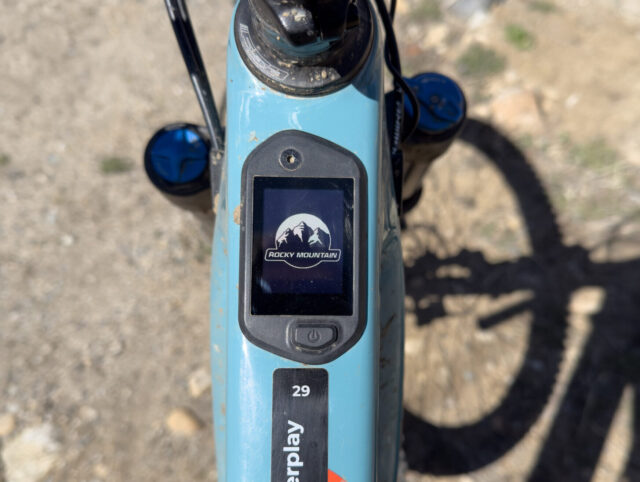
I’ve often mentioned my preference for integrated top tube displays over handlebar-mounted ones, and Rocky Mountain’s Jumbotron is exactly what I’m looking for in a display. I find minimalist displays like the Bosch System controller or the Fazua Ride 60 display to be pretty good overall, but both require getting your phone out for crucial data like actual battery level. The Jumbotron, on the other hand, has just the right amount of information while being simple to use and uncluttered.
The Dyname 4.0 drive system comes with a 720 Wh battery that is easily removable. If that is not enough, Rocky Mountain also offers the Overtime Pack 2.0 range extender with 314 Wh as an option. The combined battery capacity is a massive 1034 Wh.
Fit & Geometry
The Instinct Powerplay is available in four sizes, S, M, L, and XL. I think the sizing overall looks like it fits into relatively normal ranges. I nearly always ride a size Large frame from most brands, and after looking at the geometry I would most definitely choose a size Large. That said, 488 mm of reach (neutral geometry setting) is just a tiny bit longer than my preferred range of 470 mm to 480 mm. But dropping down to the medium at 463 mm is a bigger step down than I’d want. Adjusting the RIDE-4 position down from position 3 to position 2 lops 3 mm off the reach, so there is some wiggle room there provided the changes to the geometry align with your riding style.
Rocky Mountains RIDE-4 adjustable geometry system bakes in a ton of versatility, plus there are two chainstay length options as well, for eight total geometry configurations. The RIDE-4 system changes to the head and seat tube angles are subtle, differing by .2º to .3º for each position — in the slackest position the head angle is 64.2º, and in the steepest, it is 64.95º.
One of the more notable changes from the RIDE-4 system is in the bottom bracket drop which has a range of 10mm — Rocky Mountain calls out position 4 as a good choice for rocky, technical riding where more crank clearance is key. It just so happens I ride in that exact kind of terrain, so I’ll be putting that claim to the test.
The Builds
Between the aluminum and carbon builds, there are currently seven different build options for the Instinct Powerplay. All ten have the same Dyname 4.0 motor and 720 Wh battery — it’s nice to see even the lowest-spec models with the same motor and battery. Rocky Mountain also keeps things consistent with the same display and remote. It’s not uncommon to see brands downgrade motors and batteries in the less expensive models (and sometimes camouflage it a bit so it’s not super obvious), but I’d say it’s even more common to see displays and remotes get downgraded, and it’s nice to see Rocky Mountain not cutting any corners there.
Complete bikes start at $5499 and top out at $12,999. Here are the highlights of the diverse range of builds:
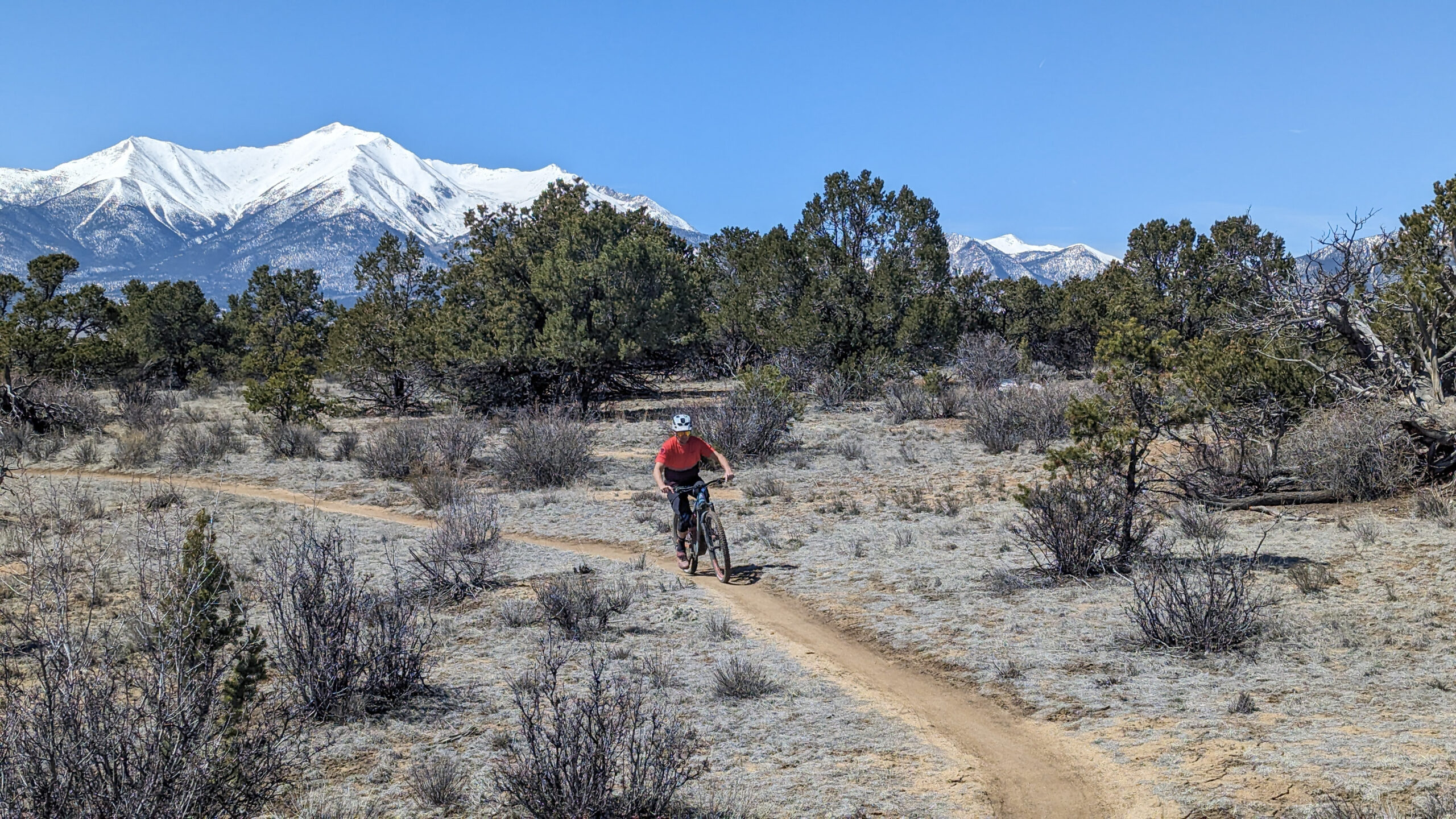
- Frame: Aluminum
- Drivetrain: Shimano Deore 10-speed
- Motor: Rocky Mountain Dyname 4.0
- Battery: 720 Wh
- Fork: Suntour Raidon 34 LOR Air Boost (140 mm)
- Shock: RockShox Deluxe Select R
- Brakes: Shimano MT200 2 Piston with 203 mm rotors
- Wheels: Rocky Mountain TR30 rims w/ Novatec D462 rear and Rocky Mountain front hubs
- Dropper Post: Rocky Mountain Toonie Drop Composite (Size S: 125mm; M: 150 mm; L & XL: 170 mm)
- Frame: Aluminum
- Drivetrain: Shimano Deore 11-speed
- Motor: Rocky Mountain Dyname 4.0
- Battery: 720 Wh
- Fork: RockShox 35 Gold RL (150 mm)
- Shock: RockShox Deluxe Select R
- Brakes: Shimano MT4120 4 Piston with 203 mm rotors
- Wheels: WTB ST i30 TCS 2.0 rims w/ Novatec D462 rear and Rocky Mountain front hubs
- Dropper Post: Rocky Mountain Toonie Drop Composite (Size S: 125mm; M: 150 mm; L & XL: 170 mm)
- Frame: Aluminum
- Drivetrain: Shimano SLX
- Motor: Rocky Mountain Dyname 4.0
- Battery: 720 Wh
- Fork: RockShox Revelation Select RC (150 mm)
- Shock: RockShox Deluxe Select+
- Brakes: Shimano MT6120 4 Piston with 203 mm rotors
- Wheels: WTB ST i30 TCS 2.0 rims w/ Shimano TC500 hubs
- Dropper Post: X Fusion Manic (Size S: 125mm; M: 150 mm; L: 170 mm; XL: 200 mm)
- Frame: Aluminum
- Drivetrain: Shimano XT
- Motor: Rocky Mountain Dyname 4.0
- Battery: 720 Wh
- Fork: RockShox Lyrik Select (150 mm)
- Shock: RockShox Super Deluxe Select+
- Brakes: Shimano XT Trail 4 Piston with 203 mm rotors
- Wheels: WTB ST i30 TCS 2.0 rims w/ DT 370 Hybrid rear and Rocky Mountain front hubs
- Dropper Post: X Fusion Manic (Size S: 125mm; M: 150 mm; L: 170 mm; XL: 200 mm)
- Frame: Carbon
- Drivetrain: Shimano SLX
- Motor: Rocky Mountain Dyname 4.0
- Battery: 720 Wh
- Fork: RockShox Lyrik Select (150 mm)
- Shock: RockShox Super Deluxe Select+
- Brakes: Shimano MT6120 4 Piston with 203 mm rotors
- Wheels: WTB ST i30 TCS 2.0 rims w/ Shimano TC500 hubs
- Dropper Post: X Fusion Manic (Size S: 125mm; M: 150 mm; L: 170 mm; XL: 200 mm)
- Frame: Carbon
- Drivetrain: Shimano XT
- Motor: Rocky Mountain Dyname 4.0
- Battery: 720 Wh
- Fork: Fox 36 E-MTB Float EVOL GRIP Performance (150 mm)
- Shock: Fox Float X Performance
- Brakes: Shimano XT Trail 4 Piston with 203 mm rotors
- Wheels: Race Face AR 30 rims w/ DT 370 Hybrid rear and Rocky Mountain front hubs
- Dropper Post: Race Face Turbine R (Size S: 125mm; M: 150 mm; L: 175 mm; XL: 200 mm)
- Frame: Carbon
- Drivetrain: Shimano XTR
- Motor: Rocky Mountain Dyname 4.0
- Battery: 720 Wh
- Fork: Fox 36 Float EVOL GRIP2 Factory (150 mm)
- Shock: Fox Float X Factory
- Brakes: Shimano XTR Trail 4 Piston with 203 mm rotors
- Wheels: Race Face ARC Carbon 31 rims w/ DT 350 Hybrid rear and Rocky Mountain front hubs
- Dropper Post: Fox Transfer Factory (Size S: 125mm; M: 150 mm; L: 175 mm; XL: 200 mm)
Some Questions / Things We’re Curious About
(1) The Instinct is a shorter-travel full-power eMTB, which is not that common. Will its shorter travel add versatility, or will it hold the bike back?
(2) The Dyname 4.0 drive system is one of the most powerful available, but how will that impact the range?
(3) The eMTB drive system landscape is a very competitive and rapidly changing space. How will Rocky Mountain’s house-made motor compare to more established brands like Bosch, who have been at this electric motor thing for a very long time?
FULL REVIEW
The Rocky Mountain Instinct Powerplay first and foremost is a full-power eMTB. Not only is it full-power, but Rocky Mountain’s house-made Dyname 4.0 drive system is also one of the most powerful full-power systems available. The high-output motor and the ground-up design give the Instinct an advantage over the competition, but it doesn’t end there, Rocky Mountain has also given the Instinct a decidedly Trail focus and a ton of versatility.
There’s a lot here to set the Instinct Powerplay apart, but there are also some details that may cause some apprehension — like a drive system that doesn’t come from an established brand like Bosch, Shimano, or Brose. This is one of the reasons we held onto this bike for so long and put over 400 hundred miles on it — we wanted to make sure to give the Dyname 4.0 motor a thorough test.
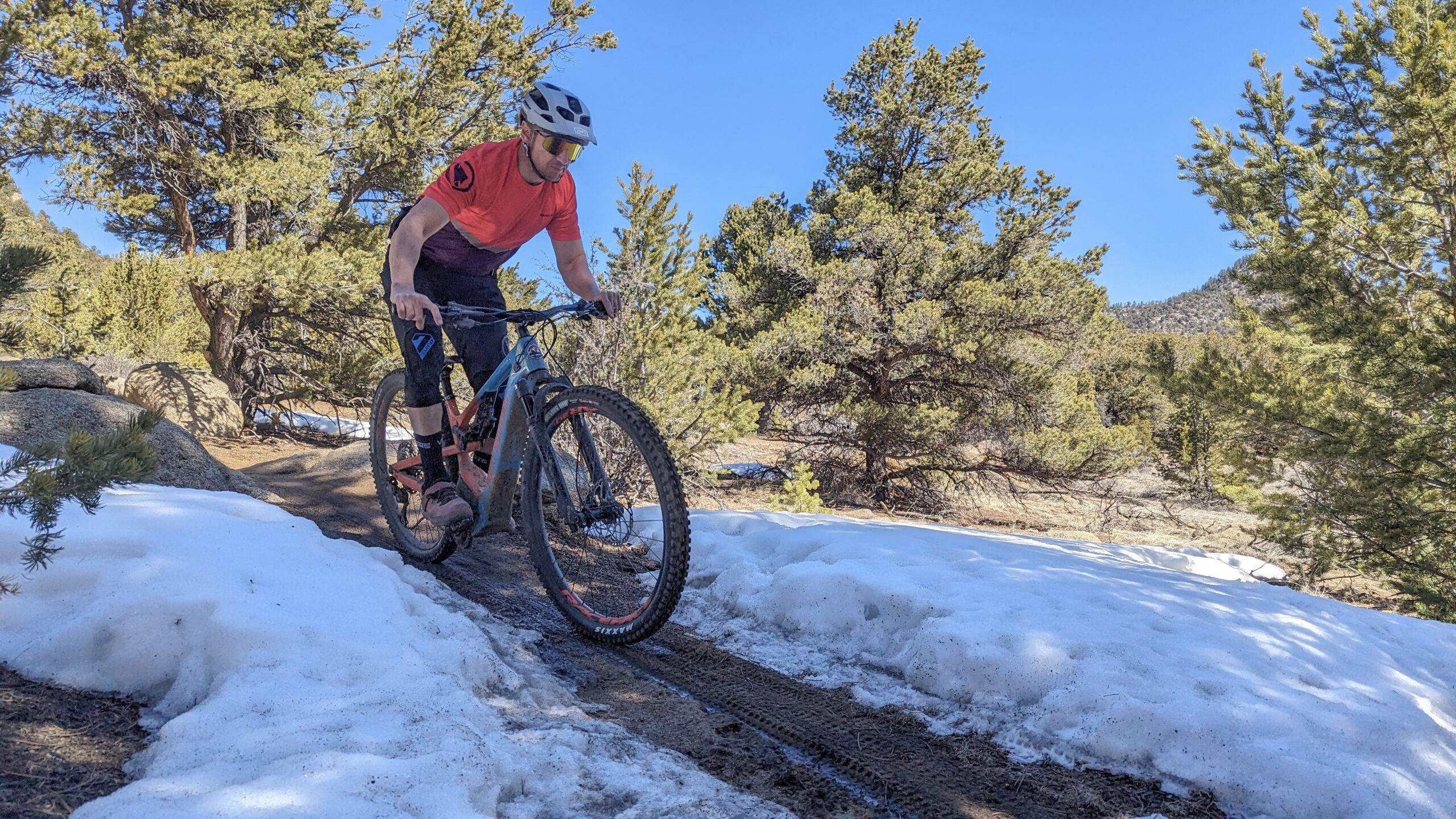
Fit & Sizing
Simon Stewart (6’, 170 lbs / 183 cm, 77 kg): The Instinct Powerplay is pretty close to my sweet spot sizing-wise, with one caveat. At first, I thought the stack height was a bit low (628 mm, neutral geometry position). I was fully prepared to swap in a higher-rise handlebar but decided to put more miles on the stock setup first. After about 50 or so miles I changed my mind as the bar height started to feel appropriate for the travel and Trail focus of the Instinct Powerplay. Fast forward to today and the stock bar is still on it.
On the reach side, the Instinct Powerplay in the neutral geometry setting is 488 mm and does not feel overly long. I typically like to stay in the 470 mm to 480 mm range, but lately have been feeling comfortable on bikes up to 485 mm. I experimented with all the RIDE-4 settings and chainstay positions to see how the ride was affected and found the changes in fit to be not that noticeable; handling, on the other hand… we’ll get there in a minute. With 25 mm separating the reach of the size Medium (463 mm) from the reach of the size Large (488 mm), there was no way I would think about sizing down.
The Instinct Powerplay has the same length chainstays for all sizes, but they are adjustable by 10 mm from 439 mm to 449 mm (neutral geometry position, varies slightly by RIDE4 setting). I tend to favor shorter chainstays more often than not and found 439 mm (I also settled on the neutral position for the RIDE4 chip as my preference) to be pretty ideal. But chainstay length is very much a matter of personal preference, and having the ability to lengthen them will appeal to a lot of riders, especially on the larger sizes.
Climbing
The Instinct Powerplay is one of the best climbing eMTBs I’ve ridden to date. The combination of the high output motor along with its maneuverability, balance, and traction helped set the highest point on my benchmark climb. And to be clear, there are some very well-sorted eMTBs it is going up against, like the Orbea Wild and the Pivot Shuttle AM.
On super steep ascents, like the benchmark climb, the Instinct Powerplay’s shorter travel feels like an advantage. The good front and rear balance keeps the front end tracking without having a necessary forward weight shift, and the rear end feels properly glued down.
The power delivery of the Dyname 4.0 motor is intuitive and very proportional to the rider’s effort. Even with the Boost mode at plus 2, and assist cranked all the way up, the power delivery never felt abrupt or hard to manage. Interestingly, despite having a big power advantage on paper, the Dyname 4.0 motor requires more pedal effort to wring the power out of it than the competitor systems from Bosch, Shimano, and Specialized. But when you put the effort in, the Instinct Powerplay rewards you with appreciably more power.
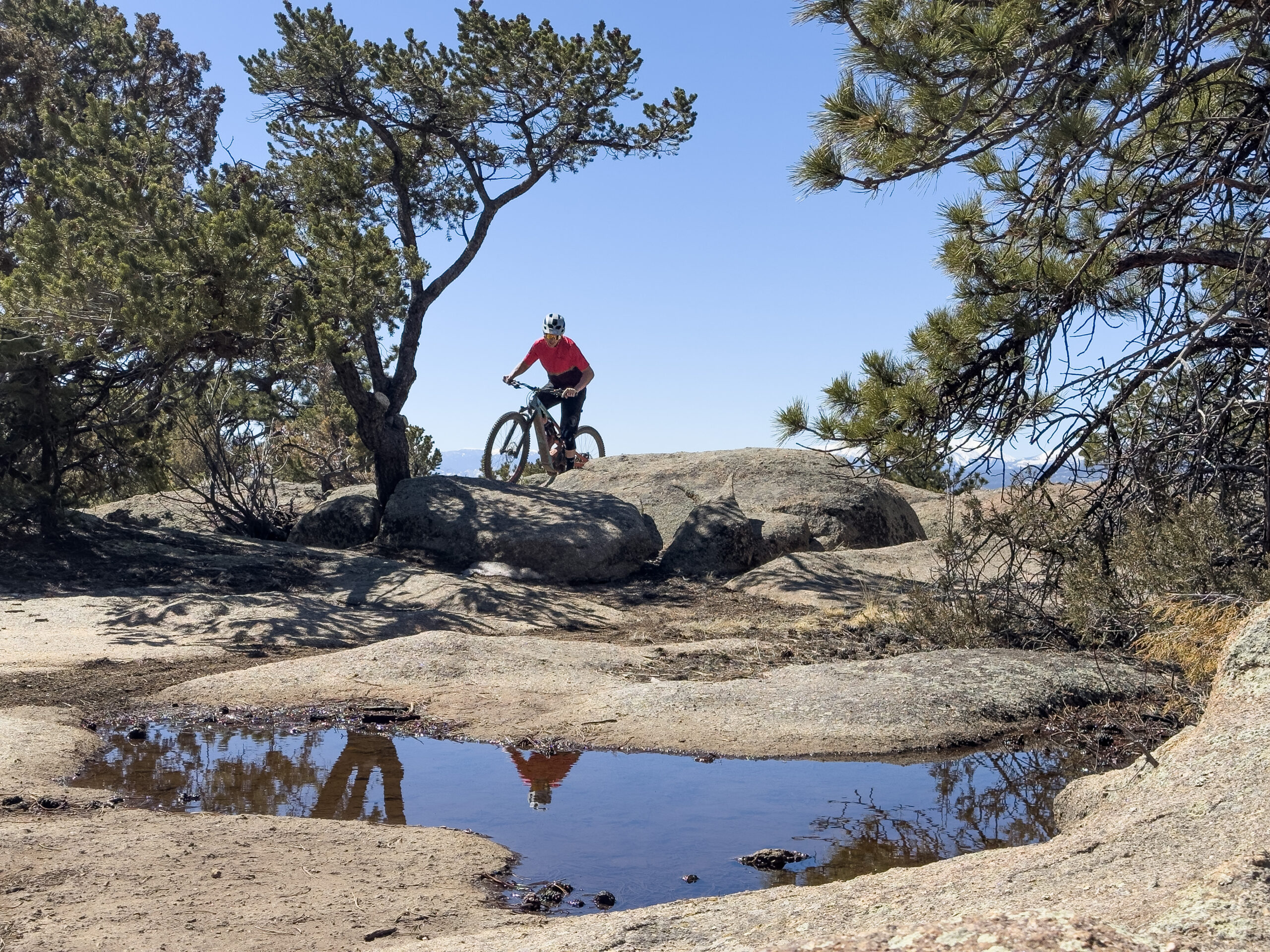
The Instinct Powerplay has a low-ish bottom bracket, plus my size Large came spec’d with 170 mm cranks, which resulted in lots of crank strikes in RIDE-4 positions 1 and 2. This impacted the Instinct Powerplay’s technical climbing performance considerably and made the bottom bracket height adjustment one of the key benefits of the RIDE-4 system. Moving it to position 3 made a significant difference, but it didn’t solve the issue completely. I briefly tried position 4, and could barely detect much of a difference and ultimately preferred the head angle of position 3. I think if it were my bike I would swap the crank arms to 165 mm ones and never look back.
On undulating terrain, I really enjoyed the Instinct Powerplay’s quick reflexes and maneuverability. The suspension feel is on the lively side which compliments the shorter travel and punchy motor.
Descending
The Instinct Powerplay impressed me right away with its rear suspension performance. I found small bump sensitivity to be very good, but it also shined when shrugging off bigger impacts. The mid-high pivot layout does an outstanding job of using all the available travel without blowing through it and suffering harsh bottom-outs.
Granted, the Instinct Powerplay has less travel than a lot of the full-powered eMTBs I’ve been on lately, but the gap in downhill performance is honestly not that big. The 140 mm of rear travel and 150 mm of front travel do a surprisingly good job of managing the mass of a 51 lb eMTB.
I mentioned in the climbing section that I settled on position 3 (neutral) of the RIDE-4 system as my preference — this was because it afforded a higher bottom bracket (for crank clearance), while still being plenty slack in the head angle (64.7º). I did try the slacker positions on the RIDE-4 system but don’t think the slight difference in handling is worth losing the crank clearance, at least for my preferences and where I ride.
On steep, rowdy trails, the Instinct Powerplay prefers a centered position and doesn’t require a forward bias to weight the front end. I swapped the chainstays between the two length options ( a 10 mm difference) and found the longer position to slightly improve the front/rear balance. But it also made the Instinct Powerplay a little less playful — compromising one of my favorite things about the bike — so the shorter chainstay length ended up being my preference.
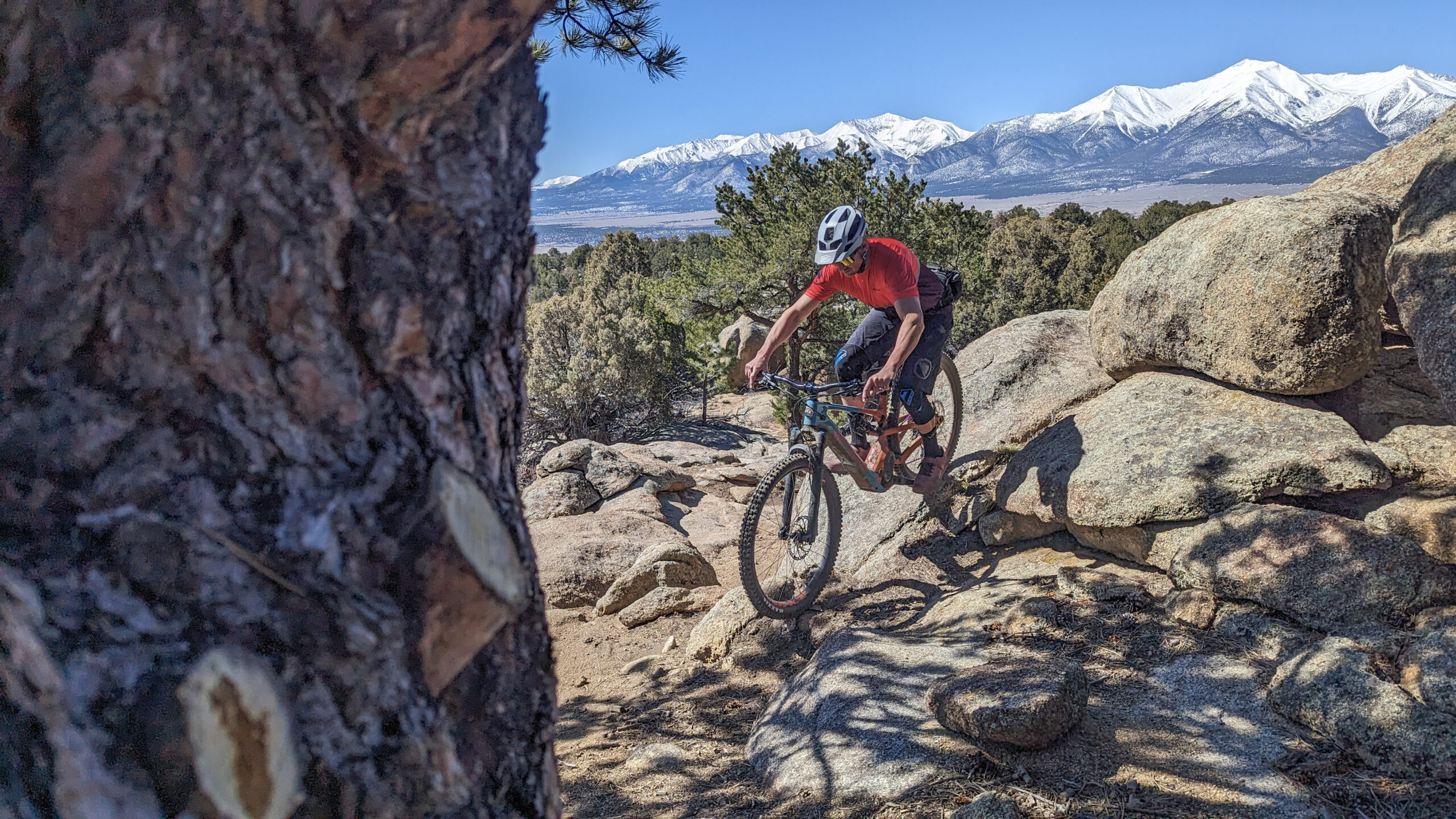
The instinct Powerplay, even with less burly suspension components actually doesn’t really weigh much less (51 lbs / 23.1 kg) than many of the longer-travel eMTBs I’ve been on. Yet it comes across as considerably more agile — it’s not quite like the Santa Cruz Heckler SL or
Norco Fluid VLT 130 but it is the most maneuverable full-power eMTB I’ve been on.
The Build
We received the Instinct Powerplay C70 Shimano build. I’m not sure why Rocky Mountain designates the builds “Shimano” since all the builds feature Shimano drivetrains, and as a whole Rocky Mountain seems to prefer Shimano drivetrains and brakes throughout their catalog.
The Shimano XT drivetrain had no issues, and after spending a ton of time on SRAM’s T-Type groupsets recently, I found the quick shifting, and precise mechanical XT drivetrain to be refreshingly good. One other noticeable thing is how I seem to bang the cage so much less on the Shimano XT derailleur than I do with the SRAM T-Type derailleur.
The parts spec on the C70 Shimano build leaves very little in need of upgrading. Sure it would’ve been nice to have the Performance Elite version of the Fox 36 and Float X (instead of the more basic Performance versions), but it’s not a deal breaker either, and both performed quite well.
I appreciate the 203 mm rotors front and rear, and when coupled with Shimano XT 4 piston brakes I have no complaints in the braking department.
One interesting spec decision is the 170 mm cranks on sizes Large and XL. 165 mm and 160 mm cranks are pretty much the norm on full-power eMTBs, and I can’t remember seeing any 170s recently, if ever. Shorter cranks on eMTBs make sense since there is no motor support without pedaling, which often requires pedaling through rocky terrain instead of coasting. And because I live in an exceptionally rocky area, I’m pretty sensitive to crank clearance — and the 170s spec’d are simply longer than I’d prefer.
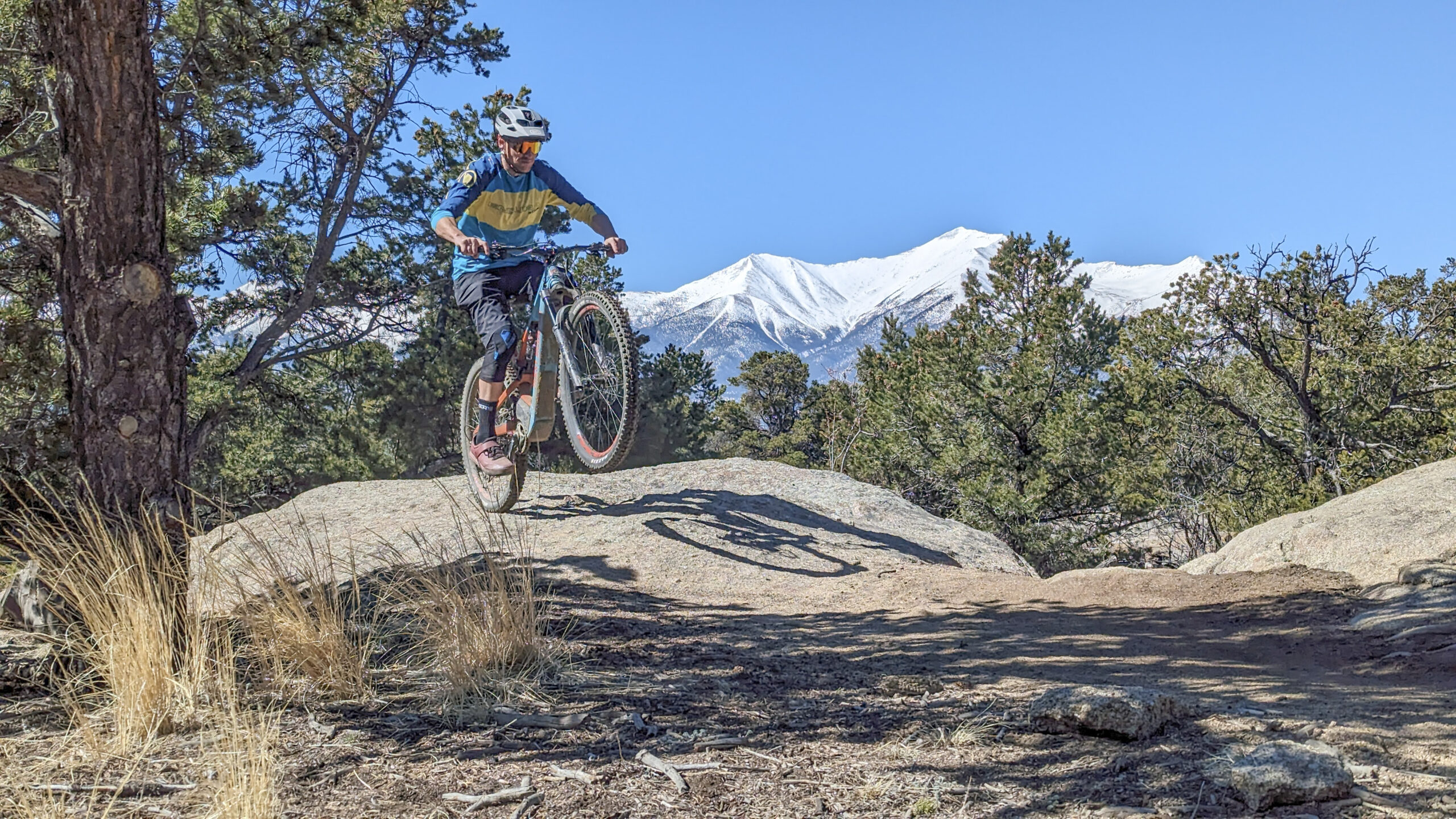
There was only one issue with a component not functioning properly and that is the Raceface Turbine R dropper post — it has been terrible. It goes down no problem, but I’ve had to resort to clamping the seat with my thighs and manually raising the post. The Turbine R is essentially a rebranded prior-generation Fox Transfer, and we’ve had similar issues with a bunch of them recently. Here’s to hoping that the recently-launched updated version sorts that out. I’d definitely be looking to swap in something more reliable if I owned the Instinct Powerplay.
Drive System and Range
I mentioned in the intro that we put over 400 miles on the Instinct to give the drive system a thorough test, and I’m happy to report that it passed without any significant issues.
On paper the Dyname 4.0 is one of the most powerful drive systems available, and certainly the most powerful motor I’ve ridden to date. It really pulls hard and feels like the claimed torque and power numbers are accurate.
There are five assist levels, including: “It’s All You,” “Eco,” “Trail,” Trail+,” and ”Ludicrous.” You can choose either the factory setting for assist percentage in each mode, or tweak them individually and save up to two custom tune files in either the Tune A or Tune B setting. You can also customize the “Boost”, which is how much rider effort is required to achieve the assist percentage of the mode you are in. For example, in Trail+ mode there is 75% assist available, and “Boost” determines how much rider effort is needed to get to 75%. “Boost” is tunable from -2 (most rider effort needed) to +2 (least rider effort needed). Unfortunately, and unlike how you can customize the assist percentage for each individual mode, customizing the “Boost” affects all the assist modes — it would be nice if you could tune the “Boost” independently for each assist mode.
Rocky Mountain’s Jumbotron display handles all of the assist functions, customization, calibration, and diagnostics for the Dyname 4.0 drive system. Overall, the Jumbotron is a simple, elegant design, with just the right amount of information. There is no app support, which I have to say is kind of welcome considering everything including my dog’s water bowl has an app these days.
The only drawback I can come up with for the lack of app support is that there is no over-the-air update functionality. If there is an update, that will require a trip to the dealer to get it sorted. That said, the Instinct Powerplay has not needed any updates, diagnostics, or service.
While the drive system did not require any diagnostics or service, it did occasionally get confused and stopped providing assistance. That hiccup was easily remedied by using the calibration function. I reached out to Rocky Mountain for more detail and they said the in-line torque sensor values can sometimes go out of range and need calibrating — which is what I did when using the calibration mode and it worked perfectly afterward.
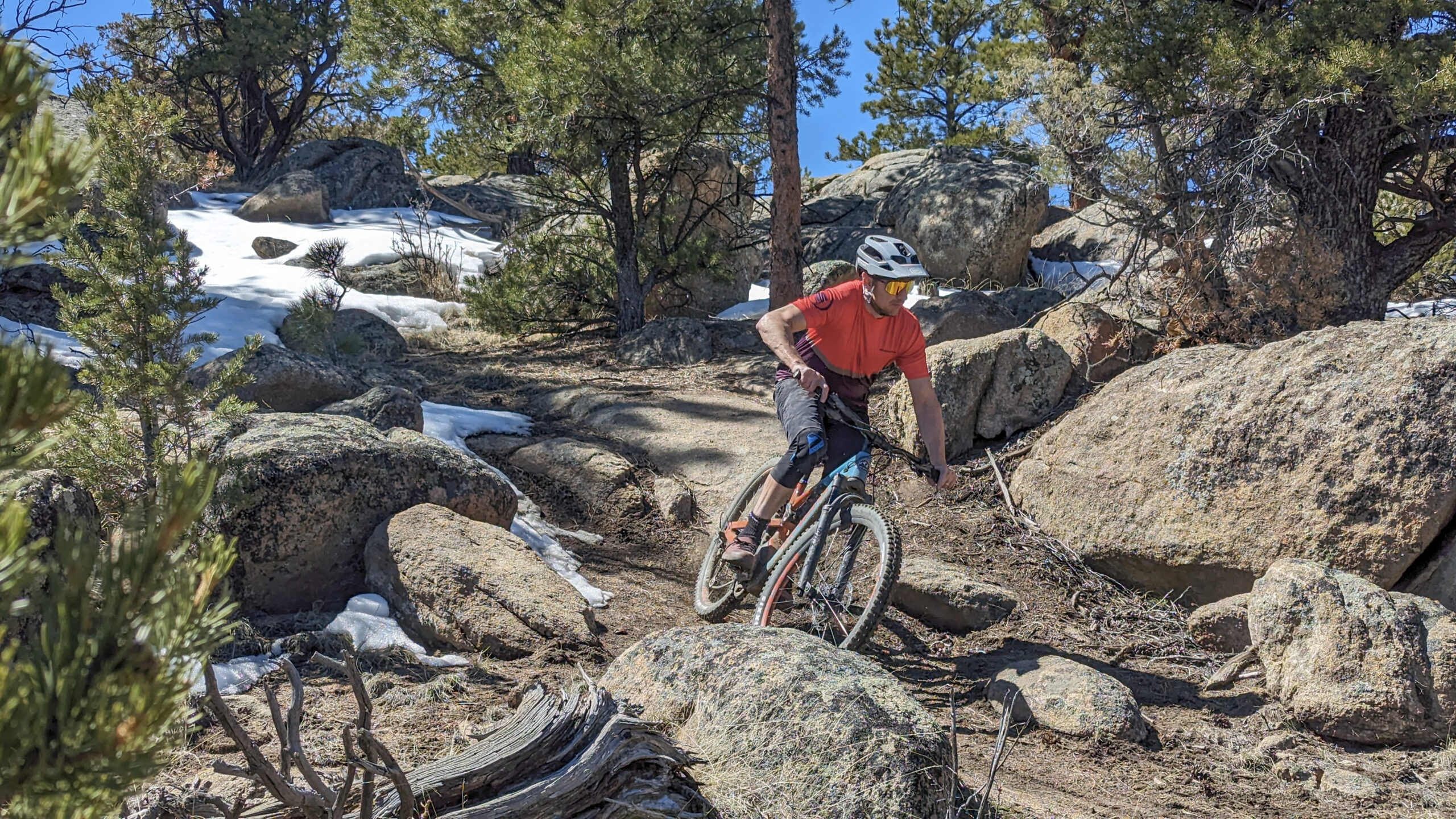
Because the Dyname 4.0 motor spins slower than many other drive systems, Rocky Mountain claims that it cuts down on high RPM gear whine, and I would agree that the Instinct Powerplay does not have much high-pitched gear whine. But it is all relative because I don’t find it to be necessarily any quieter either, it just has a different pitch, and growls instead of whines.
720 Wh is a good size battery, not too big or too small. I do think the Dyname 4.0 motor goes through watt hours a little faster than the Shimano and Bosch Systems, which makes sense given its higher torque and power numbers.
I did run the Instinct Powerplay out of power on one occasion — or so I thought, because the display was telling me it was at 0%. But it still kept providing assistance, and continued to do so for another couple of miles. It never did fully die, and had power all the way home. Now, it’s like that old car that you know has an inaccurate fuel gauge, and once you know it will run for a while on empty, you have to keep pushing your luck.
That particular ride was 26 miles with 3,700 feet of climbing, with no battery management on my part — pretty much Ludicrous mode the whole way. I’ve done longer rides with appropriate battery management, and if maximum range is a concern, then Rocky Mountain’s Overtime Pack 2.0 range extender with an additional 314 Wh is a great option.
Charging is handled by the supplied 4 Amp charger, and it’s fast — going from empty to fully charged in just under 4 hours.
Who’s It For?
I think the Instinct Powerplay is for riders who like the more engaging feel of shorter travel over the sometimes insulating character you get with longer travel bikes, but also want the power and range of a full-power eMTB. Throw in usable geometry adjustability and the Instinct has the versatility to be a lot of different things to a lot of different riders.
Bottom Line
The Rocky Mountain Instinct does things a bit differently. It has the most power of any of the common eMTB drive systems, shorter than average travel, plenty of adjustability, and no app support. I think all these things work in its favor and have created a fun, powerful, and versatile eMTB.
I rode the Instinct Powerplay on gnarly moto trails, techy climbs, steep chunky descents, flow trails, big high country rides, and casual town trail laps, and it never felt out of place. It really is an excellent choice for a 1-bike eMTB quiver.
Deep Dive Comparisons
BLISTER+ members and those who purchase our Digital Access Pass can check out our Deep Dive comparisons linked below. Get our Digital Access Pass to view all our Deep Dives and Flash Reviews, or become a BLISTER+ member today to get access to that and a LOT more, including the best worldwide Outdoor Injury Insurance, exclusive deals and discounts on skis, personalized gear recommendations from us, and much more.
Check out our Deep Dive comparisons of the Rocky Mountain Instinct Powerplay to see how it compares to the Pivot Shuttle AM, Specialized Turbo Levo, Orbea Wild, and Norco Fluid VLT 130.

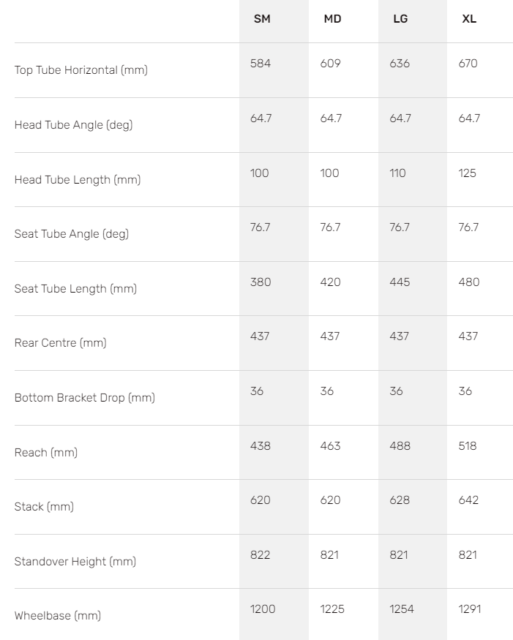
Always thought it was interesting that a small brand like Rocky decided to go their own way with the e drive system. I was always skeptics of it to be honest, but positive to hear you had a reliable experience thus far
It’s worth noting that this shares the same frame as the Altitude, so if you swap the fork (or change travel), shock and shock mount you now have a 160mm enduro bike.
For clarity, only the carbon versions are able to convert to an Altitude.